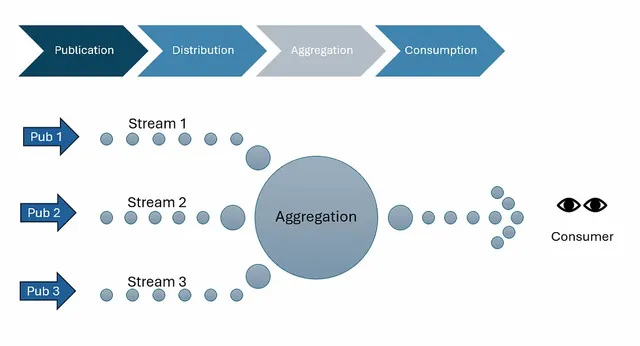Are blogs still useful?
In August 2009, I wrote an article questioning if blogs were losing their influence. In conversations over the last two weeks, I had reason to go back to it because I thought they were important things I’d said then which I need to check if they were still valid; if so, I thought they were worth repeating. I found the old article quite hard to read, although at the time, I thought this was a good thing. I felt people needed to work hard to understand my writing, that it would do them good. I don’t feel this way any more, I hope this is simpler.

The thrust of the article was an attempt to understand if the advent of micro-blogging was undermining the popularity of blog content. Today, we have multiple micro blog content streams often in rich formats, such as Instagram, and TikTok. The original article was written in a different time; providers that came to be secret gardens were pushing “open”, and building personal content graphs from multiple services was relatively easy. I was also taken with the idea that successful internet sites did one thing well which was a motivation for building such graphs.
Another hope I had was that the new social media would put power in the hands of content consumers who would be able to choose firstly who they follow, and then ensure they only read what they wanted from those sources. I believed or hoped that one of the ways in which content would be promoted is via recommendations from trusted friends. This is a role Twitter came to perform and that Digg which was designed to do the same failed to do, as a decade later did Steemit. Concurrently to all this, those that became big players had begun to put barriers up, making graph construction much harder.
I suggested that there were four tasks in the content distribution chain. These were/are, publication, distribution, aggregation and consumption.

I observed that different sites and technologies sought to perform and excel in different parts of the chain. I said I hoped that content chains would be built that empowered the consumer. This didn’t happen because finding content was hard, and duplication was a problem. If people publish to two services, then usually their friends will see what you say twice. Another problem is that feeds are published in date order and unless constantly monitoring a feed, you may miss stuff that was published when one is not logged in.
However, the main reason it failed was that the big social media platforms enclosed their services. The technical development of the eventual victors of the social media platform have all become secret gardens as they abandoned RSS/XML, enclosed the logins, and eventually encrypted the messages. This all makes building personal consumer defined feeds difficult. It also means it’s hard to avoid the dross and the unwanted advertisements.
At the time we were also fascinated by the Cluetrain manifesto which predicted that the expansion of web authorship would lead to the disintermediation of marketing departments. This was most powerfully seen in sponsored or unofficial product “fan” sites, staffed by product experts.
I have come to the view that organisations, and I’m mainly talking about third sector organisations need to make finding their content, all of it, easy. That to my mind means having a source which in my view is best organised on a platform like WordPress, or one of its competitors, which has as a means of documenting the social media feeds published by the organisation. The construction of a site-specific search engine needs to be considered. This is a means whereby social media posts, particularly those which are the only statement do not get lost.
In terms of the diagram/architecture, organisations need to perform their own aggregation.
In 2009, I and my mentors, felt the micro-blogging was not diminishing the power of the blogosphere. I wonder if we understood the likely behaviour of the social media platforms as they sought to enclose their users and make sharing between platforms much more difficult.
Today, I recommend that one needs a web site, available to browse by phone and laptop and that it needs to point at the other media platforms one uses. Some people used as their web site but what ever the publication platform chosen, content needs to be frequently updated.
Originally published at https://www.linkedin.com.